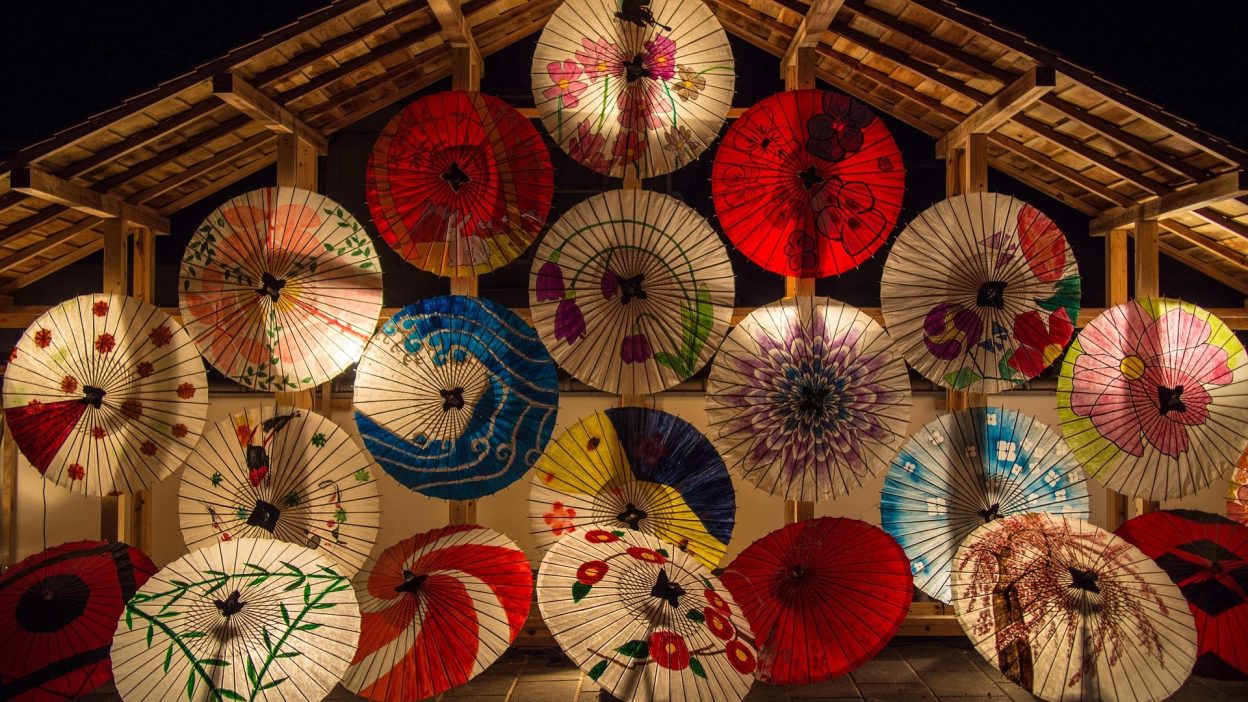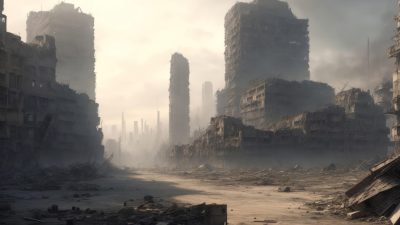The Night the Sanriku Coast Was Erased by a Tsunami
1. The Earthquake That Barely Shook but Shattered Thousands of Lives
On the evening of 17 June 1896, a powerful underwater earthquake occurred off the Sanriku coast of Japan. Unlike many earthquakes that immediately wreak havoc on buildings and infrastructure, this one was unusually deceptive. The tremors were barely felt on land, giving residents no reason to panic. There were no falling structures, no fires, and no visible destruction.
For a population accustomed to seismic activity, this seemed like just another minor tremor, nothing that warranted concern. However, beneath the ocean, something far more sinister was happening. The seabed violently shifted, displacing an enormous volume of water. Unseen and silent, a catastrophe was already in motion.
Roughly 35 minutes later, as people went about their evening completely unaware of the danger, the first gigantic wave came charging towards the coast. By the time they saw it, there was no escape.
2. A Tsunami Taller Than Buildings: When the Sea Became the Executioner
The tsunami that followed the earthquake was one of the tallest and most devastating waves ever recorded. At an estimated 25 metres (82 feet) high, it was no ordinary surge—it was a colossal wall of destruction that swallowed everything in its path.
The wave struck with terrifying speed, obliterating entire villages within seconds. Wooden houses, fishing boats, trees, and even sections of cliffs were swept away like paper in the wind. Families enjoying their evening meals were ripped from their homes, carried inland by a force no human could resist.
For those who managed to flee towards higher ground, the nightmare was far from over. The first wave was followed by another, equally deadly. Survivors who thought they had escaped were dragged back into the water, drowning in the chaos. The sea that had once provided their livelihood had now become their grave.
3. The Brutal Numbers: How Many Lives Were Lost in the 1896 Sanriku Disaster?
- A Death Toll That Stunned the World
The tsunami claimed over 22,000 lives, making it one of Japan’s deadliest natural disasters. Some villages were completely wiped off the map, leaving no survivors. Entire generations perished together, with bodies later found kilometres away from their homes. - Thousands More Injured, Countless Missing
Aside from the confirmed fatalities, thousands were seriously injured or declared missing. The tsunami’s force crushed bones, tore limbs, and inflicted severe wounds, leaving many permanently disabled. The actual death toll may have been even higher, as entire families vanished without a trace. - Coastal Towns Reduced to Rubble
The worst-hit areas were Iwate and Miyagi Prefectures, where over 9,000 homes were levelled. Fishing communities were erased, leaving survivors with nothing—no food, no shelter, and no way to rebuild their lives. - Tsunami Waves Reached Other Countries
The tsunami’s power was so immense that waves were detected in Hawaii and China, highlighting the global impact of this disaster.
4. Japan’s Fatal Mistake: Why No One Expected a Catastrophe of This Scale
Japan, sitting along the Pacific Ring of Fire, is no stranger to earthquakes. However, in 1896, scientific understanding of tsunamis was still primitive. The people of Sanriku had survived earthquakes before, and because this one felt weak on land, they assumed the danger had passed.
What they did not realise was that this was a deep-sea megathrust earthquake. Such earthquakes barely shake the surface but unleash enormous energy underwater, displacing massive volumes of water. Without modern warning systems, there was no way to predict what was coming.
The disaster struck at 7:32 PM, catching residents at their most vulnerable. Unlike daytime quakes where people could react faster, this one came at night, under complete darkness. Survivors later recalled how they heard the tsunami before they saw it, describing a deep, monstrous roar that grew louder by the second.
By the time the ocean withdrew, exposing the seafloor—a classic tsunami warning—it was already too late. The next moment, the unstoppable wave was upon them.
5. When the Tsunami Became Deadlier Than the Earthquake Itself
Unlike most earthquakes that cause structural collapses and fires, the 1896 Sanriku disaster was different. The quake itself caused almost no damage, but the tsunami turned it into one of the deadliest events in Japanese history.
The sheer height and strength of the waves were far greater than what scientists expected from an 8.5-magnitude earthquake. This was due to a phenomenon known as tsunami amplification, where the waves gain height as they approach narrow coastal areas.
The Sanriku coastline’s unique geography—steep cliffs and funnel-shaped bays—acted like a magnifying glass, intensifying the waves’ impact. People who thought they had escaped inland found themselves still in the tsunami’s reach, with no way out.
6. The Haunting Voices of the Few Who Survived
Survivors of the Sanriku tsunami described it as a nightmare beyond words. Some recalled seeing their entire families swallowed by the sea. Others were dragged miles away, waking up among floating corpses and shattered homes.
For weeks after the disaster, bodies continued washing ashore. Some were found clinging to broken rooftops, while others were buried beneath debris. The devastation was so complete that even government officials were at a loss—they had never witnessed such a catastrophe before.
7. Japan’s Ongoing Tsunami Nightmare: A Disaster Waiting to Strike Again
- A History of Devastation Repeating Itself
The Sanriku region had suffered deadly tsunamis before, yet the lessons were never fully learned. A similar event had struck in 1611, but no effective prevention methods were in place. - A Geography That Made the Disaster Inevitable
The steep, narrow bays along the Sanriku coast turned the tsunami into a weapon of mass destruction, ensuring that future tsunamis would be just as deadly. - Warnings That Came Too Late
Despite past disasters, there was no evacuation system, no protective seawalls, and no strategy to mitigate the destruction. The government’s slow response only deepened the suffering.
8. Aftermath: How Japan Struggled to Recover from Its Darkest Night
The Sanriku tsunami of 1896 left Japan in ruins. In the immediate aftermath, entire villages ceased to exist, and those who survived were left homeless, starving, and grieving. The devastation was so overwhelming that even government officials struggled to comprehend the scale of the disaster.
The Japanese government, ill-prepared for a disaster of this magnitude, struggled to send aid to the affected regions. The country’s infrastructure was inadequate, with roads destroyed and communications severed. In many villages, there were no survivors left to even report the disaster—the tsunami had simply wiped them off the map.
Relief efforts were slow and disorganised. It took weeks for food and medical supplies to reach many areas, and even when help arrived, it was nowhere near enough. Many survivors died from injuries, starvation, and exposure, as they had no homes, no food, and no way to escape the wreckage.
The psychological scars ran even deeper than the physical ones. Entire generations were lost, and for those who remained, life was never the same again. The Sanriku coastline, once a thriving fishing hub, had been reduced to nothing but debris and death. The government declared it one of the darkest days in Japan’s history, but for those who survived, the nightmare was far from over.
9. Could the 1896 Disaster Have Been Prevented?
One of the most haunting questions surrounding the 1896 Sanriku tsunami is whether it could have been prevented. Japan had historical records of tsunamis, but failed to take the necessary precautions. The country had experienced a similar tsunami in 1611, yet no protective infrastructure had been built in the centuries that followed.
There were clear warning signs, but they were ignored. The earthquake felt weak, leading people to assume they were safe. However, scientists today understand that deep-sea megathrust earthquakes don’t always cause strong tremors on land—but they do trigger massive tsunamis. If residents had been educated about this, thousands of lives could have been saved.
Another major failure was the lack of evacuation plans. In modern Japan, tsunami sirens, sea walls, and evacuation drills are standard—but back in 1896, none of these existed. Had there been a warning system or a faster way to spread the alarm, people could have fled to higher ground. Instead, they were caught completely off guard, resulting in one of the highest tsunami death tolls in history.
In hindsight, the disaster was not just a tragedy—it was a failure of preparedness. Had lessons been learned from previous tsunamis, Japan could have saved thousands of lives. But instead, the country paid the ultimate price for its negligence.
10. Is Japan Truly Prepared for the Next Big One?
Japan has since made massive advancements in tsunami preparedness, but the question remains: Is it enough?
Following the 1896 disaster, Japan began building tsunami walls, strengthening coastal defences, and improving warning systems. The modern tsunami detection system can now detect undersea earthquakes within minutes, giving people critical time to escape. Evacuation drills are conducted regularly, and seawalls have been constructed in high-risk areas.
However, history has shown that nature always finds a way to outmatch human defences. The 2011 Tōhoku earthquake and tsunami proved that even with modern technology, thousands can still die. Despite its sea walls and advanced warning systems, Japan still lost over 15,000 lives in 2011.
The Sanriku region remains one of the most vulnerable areas in Japan, and scientists warn that another tsunami is inevitable. The only question is when. Have the lessons of 1896 and 2011 truly been learned? Or will history repeat itself once more?
One thing is certain—Japan cannot afford to let its guard down again.
FAQS
1. What caused the 1896 Sanriku earthquake and tsunami?
The 1896 Sanriku disaster was triggered by a deep-sea megathrust earthquake off the coast of Japan. Though the quake itself was barely felt, it generated a massive tsunami that devastated coastal towns.
2. Why was the death toll so high in the 1896 Sanriku tsunami?
The tsunami struck at night, catching residents completely off guard. There were no warning systems, and the earthquake felt too weak to cause alarm, leading people to stay in their homes instead of evacuating.
3. Could the 1896 Sanriku tsunami have been prevented?
While earthquakes cannot be prevented, better awareness, warning systems, and evacuation plans could have saved thousands of lives. Historical records showed similar past tsunamis, yet no protective measures were in place.
4. How does the 1896 tsunami compare to the 2011 Tōhoku disaster?
Both tsunamis devastated Japan, but the 2011 Tōhoku tsunami was stronger and caused a nuclear meltdown. However, more lives were lost in 1896 due to the lack of warning systems and modern infrastructure.5. Is Japan prepared for another Sanriku-like tsunami?
Japan now has tsunami walls, sirens, and advanced warning systems, but experts warn that nature is unpredictable. The 2011 tsunami showed that even modern defences can fail, making constant vigilance essential.




